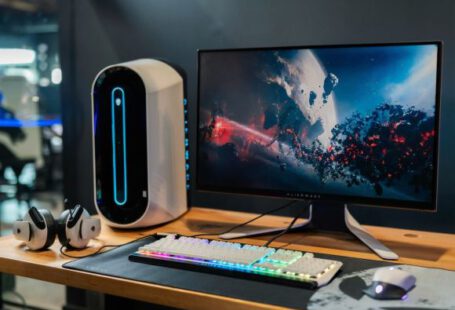Augmented reality (AR) is a technology that overlays digital information onto the real world, enhancing our perception of reality. With the increasing adoption of AR in various industries, it is only a matter of time before it revolutionizes the field of user experience (UX) design. In this article, we will explore the potential impact of augmented reality on UX design and how it can transform the way we interact with digital products.
Enhancing User Engagement
One of the key benefits of augmented reality in UX design is its ability to enhance user engagement. Traditional user interfaces are limited to two-dimensional screens, which can be restrictive in terms of user interaction. However, with AR, users can interact with digital content in a more natural and intuitive way. For example, instead of clicking buttons on a screen, users can simply gesture or use voice commands to navigate through a virtual interface. This not only makes the user experience more immersive but also reduces the learning curve for new users.
Creating Personalized Experiences
AR has the potential to create highly personalized experiences for users. By leveraging real-time data and user preferences, AR applications can adapt their interfaces to meet the specific needs and preferences of individual users. For example, an AR shopping app can display personalized product recommendations based on a user’s browsing history and purchase behavior. This level of personalization not only improves user satisfaction but also increases the likelihood of conversion and customer loyalty.
Blurring the Line Between Physical and Digital
One of the most exciting aspects of augmented reality is its ability to blur the line between the physical and digital worlds. With AR, digital content can be seamlessly integrated into the real world, creating a mixed reality experience. This opens up new possibilities for UX designers to create innovative and immersive user experiences. For example, AR can be used to overlay digital instructions onto real-world objects, making complex tasks easier to understand and perform. This not only improves the usability of digital products but also enhances the overall user experience.
Designing for Spatial Awareness
AR introduces a new dimension to UX design – spatial awareness. Unlike traditional user interfaces, which are confined to a flat screen, AR interfaces exist in three-dimensional space. This means that UX designers need to consider factors such as depth, scale, and perspective when designing AR experiences. By designing for spatial awareness, UX designers can create more intuitive and natural user interfaces that take full advantage of the capabilities of AR. For example, by using depth cues and visual markers, designers can guide users through virtual environments and help them understand their position and orientation within the space.
The Future of UX Design
As augmented reality continues to evolve and become more accessible, it is clear that it has the potential to transform the field of UX design. From enhancing user engagement to creating personalized experiences, AR opens up new possibilities for designers to create innovative and immersive user experiences. By blurring the line between physical and digital, AR can create a mixed reality experience that seamlessly integrates digital content into the real world. With the rise of AR, UX designers will need to adapt their design processes and techniques to take full advantage of this exciting technology.
In conclusion, augmented reality has the potential to revolutionize UX design by enhancing user engagement, creating personalized experiences, blurring the line between physical and digital, and designing for spatial awareness. As AR becomes more prevalent, UX designers need to stay ahead of the curve and embrace this technology to create compelling and immersive user experiences. The future of UX design is exciting, and augmented reality will undoubtedly play a significant role in shaping it.





